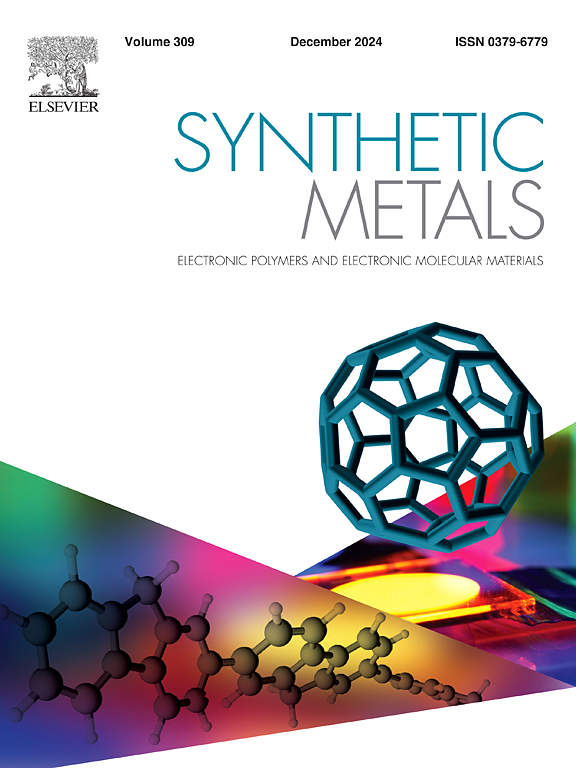Enhancing energy storage performance of polymer composites with molecular semiconductors
IF 4.6
3区 材料科学
Q2 MATERIALS SCIENCE, MULTIDISCIPLINARY
引用次数: 0
Abstract
With the ever-increasing demand for advancing clean energy technologies, efficient energy storage devices have attracted significant attention in both research and industrial fields. Dielectric capacitors have advantages of high power density, rapid discharge rates, and excellent stability. Compared to inorganic ceramic materials, polymer-based dielectrics are favored for the fabrication of high-energy capacitors due to their elevated operating voltages and flexible processing capabilities. In this study, the P(VDF-CTFE) polymer matrix is combined with molecular semiconductors, specifically PCBM and ITIC, to enhance the breakdown strength and energy storage density of composite film materials. The introduction of molecular semiconductors promotes the formation of the α phase and improves crystallinity, which in turn contributes to the reduction of dielectric loss and the enhancement of efficiency. With the addition of 1.1 wt% PCBM, the polymer composite dielectric achieves an impressive breakdown strength of 490 MV/m, an energy density of 17 J/cm³ , and a charge-discharge efficiency of 76 %. In comparison, doping with 0.3 wt% ITIC results in a breakdown strength of 409 MV/m, a lower energy density of 8.7 J/cm³ , and a charge-discharge efficiency of 50 %. The introduction of molecular semiconductors creates trap states and inhibits carrier mobility in the polymer composites, thereby effectively enhancing the breakdown strength. The molecular semiconductor PCBM, with its higher electron affinity and larger bandgap, is more favorable for optimizing the energy storage performance of the polymer composite materials.
提高分子半导体聚合物复合材料的储能性能
随着人们对先进清洁能源技术的需求不断增长,高效储能装置在研究和工业领域都受到了极大的关注。介质电容器具有功率密度高、放电速率快、稳定性好等优点。与无机陶瓷材料相比,聚合物基介电材料由于其较高的工作电压和灵活的加工能力而被青睐于制造高能电容器。本研究将P(VDF-CTFE)聚合物基体与分子半导体,特别是PCBM和ITIC结合,提高复合薄膜材料的击穿强度和储能密度。分子半导体的引入促进了α相的形成,提高了结晶度,从而降低了介电损耗,提高了效率。添加1.1 wt%的PCBM后,聚合物复合介质的击穿强度为490 MV/m,能量密度为17 J/cm³ ,充放电效率为76 %。相比之下,掺杂0.3 wt%的ITIC,击穿强度为409 MV/m,能量密度为8.7 J/cm³ ,充放电效率为50 %。分子半导体的引入产生了陷阱态,抑制了聚合物复合材料中的载流子迁移率,从而有效地提高了击穿强度。分子半导体PCBM具有更高的电子亲和力和更大的带隙,更有利于优化聚合物复合材料的储能性能。
本文章由计算机程序翻译,如有差异,请以英文原文为准。
求助全文
约1分钟内获得全文
求助全文
来源期刊

Synthetic Metals
工程技术-材料科学:综合
CiteScore
8.30
自引率
4.50%
发文量
189
审稿时长
33 days
期刊介绍:
This journal is an international medium for the rapid publication of original research papers, short communications and subject reviews dealing with research on and applications of electronic polymers and electronic molecular materials including novel carbon architectures. These functional materials have the properties of metals, semiconductors or magnets and are distinguishable from elemental and alloy/binary metals, semiconductors and magnets.
 求助内容:
求助内容: 应助结果提醒方式:
应助结果提醒方式:


